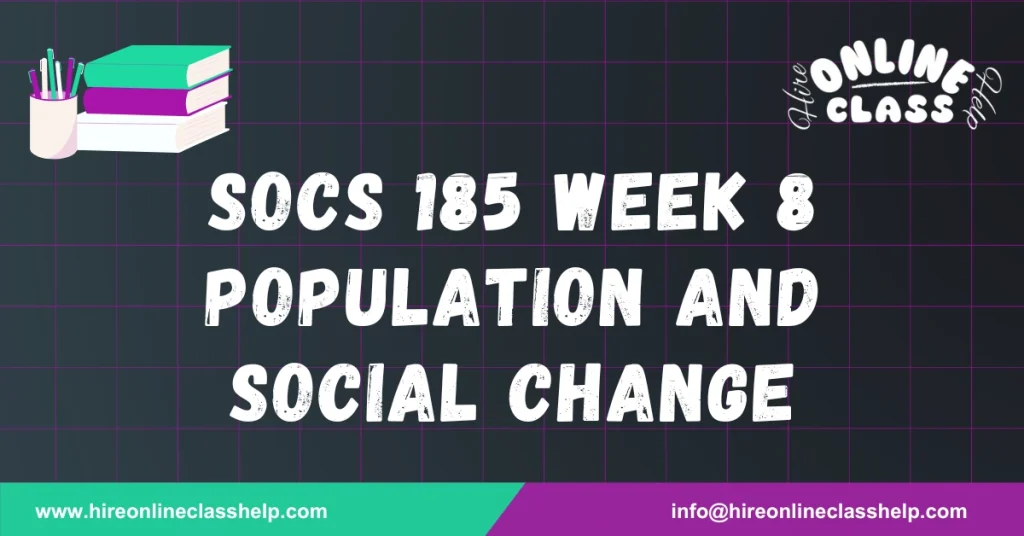






Name
Chamberlain University
SOCS-185 Culture & Society
Prof. Name
Date
Urban growth refers to the increase in population size within specific areas over time, influenced by advancements in technology and various social factors. Structural-functionalism examines how different societal sectors contribute to population growth. According to Shevky and Bell, social area analysis considers urban populations through the lenses of economic status, family structure, and ethnic classification (Kendall, 2018, p. 473). Families play a crucial role in population increase by raising children, while schools provide education that fosters socialization. Factors such as an individual’s status, ethnicity, and cultural background shape their values and beliefs, with religion offering guiding principles. Collectively, these social elements create a conducive environment for migration and family formation, thereby facilitating urban growth.
In contrast, the symbolic-interactionist perspective highlights the roles of economic and political factors in urban growth. The political economy model indicates that urban expansion is influenced by capital investment, resource inequality, class conflict, and government support programs (Kendall, 2018, p. 474). The disparity in resource distribution often disadvantages lower-class individuals, leading to social conflicts and problems such as poverty, homelessness, and increased crime rates. The symbolic interactionist approach also focuses on the everyday interactions and symbols that shape life in urban settings. From personal experience, the behaviors of individuals in densely populated cities like New York can differ significantly from those in less developed areas like Colorado. For instance, I observed that people in New York often appeared unhelpful and rude, whereas those in Colorado were generally friendly and welcoming. This illustrates how urban growth can influence social behaviors, with individuals often becoming guarded in response to the pressures of city life.
Overall, structural-functionalists and social conflict theorists analyze urban growth on a macro level, examining broader political and economic factors, while symbolic interactionists focus on micro-level social interactions.
From a sociological perspective, collective behavior is defined as voluntary, often spontaneous actions taken by large groups that typically violate societal norms and values (Kendall, 2018, p. 491). Such behaviors often emerge during protests aimed at addressing social imbalances, and while they can lead to social change, the outcomes are not always guaranteed. Collective behavior encompasses various forms, including crowd behavior, mass behavior, public opinion, and social movements. Understanding collective behavior requires insight into why individuals engage in such actions and the potential harms they may cause.
Typically, collective behaviors lack formal laws and may violate societal norms, leading to destructive and aggressive outcomes. Research indicates that individuals often act under social influence, imitating the behaviors of others in uncertain situations (Bäck et al., 2018, p. 50). This mimicry can amplify collective actions, leading to significant social influences and potential changes. A notable example is the Civil Rights Movement, which successfully challenged racial segregation. This movement involved a series of processes, including Martin Luther King Jr.’s impactful speeches that raised awareness, culminating in organized actions like the March on Washington. Such collective behaviors provide critical insights into societal and political transformations, demonstrating that while collective action can be a powerful force for social change, it does not always guarantee positive outcomes.
| Theoretical Perspective | Focus | Key Concepts | Example |
|---|---|---|---|
| Structural-Functionalism | Societal sectors and their roles | Economic status, family structure, ethnic classification | Migration leading to urban growth |
| Symbolic-Interactionism | Daily interactions and social symbols | Economic factors, political influence, social behavior | Differences in behavior in urban vs. rural areas |
| Social Conflict Theory | Inequality and power dynamics | Resource distribution, class conflict, social problems | Poverty and crime as outcomes of inequality |
Bäck, E. A., Back, H., & Siven, D. (2018). Why Engage in Collective Action? The Conditional Effect of Social Support and Efficacy on Protest Participation. Basic and Applied Social Psychology, 40(1), 49–59. Retrieved from EBSCO
Kendall, D. (2018). Sociology in Our Times: The Essentials (11th ed.). Boston: Cengage Learning.